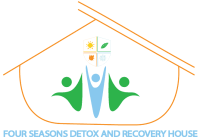When it comes to health and wellness, terms like “healing” and “curing” are often used interchangeably. However, they represent distinct concepts in medical and holistic practices. Understanding the difference between healing and curing can provide a clearer perspective on treatment approaches and expectations. This article delves into the nuances of healing vs curing, examining their definitions, processes, and implications for overall well-being.
What is Healing?
Healing is a holistic process aimed at restoring balance and harmony within the body, mind, and spirit. It encompasses physical, emotional, mental, and spiritual dimensions. Unlike curing, which focuses on eliminating symptoms and eradicating diseases, healing addresses the root causes of illness and promotes overall well-being.
The Process of Healing
Healing involves a comprehensive approach that includes lifestyle changes, stress management, and emotional support. This process can be gradual and requires active participation from the individual. Key elements of healing include:
- Mind-Body Connection: Practices like meditation, yoga, and mindfulness can enhance the mind-body connection, promoting healing from within.
- Nutrition and Diet: Proper nutrition supports the body’s natural healing processes by providing essential nutrients and reducing inflammation.
- Emotional Well-being: Addressing emotional traumas and fostering positive relationships contribute to holistic healing.
Benefits of Healing
- Holistic Health: Healing aims to improve overall health and quality of life.
- Sustainable Wellness: By addressing underlying issues, healing promotes long-term wellness rather than temporary relief.
- Empowerment: Healing empowers individuals to take control of their health and well-being.
What is Curing?
Curing, on the other hand, is the process of eliminating disease or symptoms through medical interventions. It often involves treatments like surgery, medication, or other medical procedures designed to eradicate the illness. Curing is primarily concerned with the physical aspect of health and aims for immediate results.
The Process of Curing
Curing typically involves a specific medical intervention targeted at removing the disease. This process can be quick and is often supervised by healthcare professionals. Key elements of curing include:
- Medical Treatments: Use of drugs, surgeries, and other medical procedures to address the disease directly.
- Symptom Management: Focus on reducing or eliminating symptoms to restore normal function.
- Diagnosis and Monitoring: Regular check-ups and tests to ensure the effectiveness of treatments and adjust as needed.
Benefits of Curing
- Quick Relief: Curing provides fast and often complete relief from symptoms.
- Targeted Approach: Directly addresses the disease, aiming for its complete eradication.
- Medical Supervision: Treatments are administered and monitored by healthcare professionals, ensuring safety and efficacy.
Healing vs Curing: Key Differences
While both healing and curing are essential for health, they differ in their approach, focus, and outcomes. Here are the key differences:
Approach
- Healing: Emphasizes a holistic approach, considering the physical, emotional, mental, and spiritual aspects of health.
- Curing: Focuses on the physical eradication of disease through medical interventions.
Focus
- Healing: Aims to restore balance and promote overall well-being.
- Curing: Targets the specific disease or symptoms for immediate relief.
Outcomes
- Healing: Results in sustainable wellness and long-term health improvements.
- Curing: Provides quick and often complete relief from symptoms or disease.
When to Seek Healing vs Curing
The choice between seeking healing or curing depends on the nature of the health issue and personal preferences. Here are some considerations:
For Chronic Conditions
Chronic conditions like diabetes, arthritis, or heart disease may benefit more from a healing approach. These conditions often require long-term management and lifestyle changes to maintain overall health.
For Acute Conditions
Acute conditions, such as infections or injuries, may require curing for immediate relief. Medical treatments can quickly address the symptoms and prevent complications.
Integrative Approach
An integrative approach combines both healing and curing, offering a comprehensive strategy for health. For instance, a patient undergoing surgery (curing) may also engage in physical therapy, nutritional adjustments, and stress management (healing) for a complete recovery.
Case Studies: Healing vs Curing in Practice
Case Study 1: Chronic Back Pain
- Curing: A patient with chronic back pain may undergo surgery to correct a spinal issue.
- Healing: Post-surgery, the patient engages in physical therapy, yoga, and stress management to support long-term recovery and prevent recurrence.
Case Study 2: Depression
- Curing: A person with severe depression might receive medication to manage symptoms.
- Healing: Alongside medication, the individual participates in counseling, mindfulness practices, and lifestyle changes to address underlying causes and promote overall mental health.
The Role of Lifestyle in Healing and Curing
Lifestyle plays a crucial role in both healing and curing. A healthy lifestyle can enhance the effectiveness of medical treatments and support holistic healing. Key lifestyle factors include:
- Nutrition: A balanced diet rich in nutrients supports the body’s natural healing processes and can improve the outcomes of medical treatments.
- Exercise: Regular physical activity promotes physical health and emotional well-being, aiding both healing and curing.
- Stress Management: Techniques such as mindfulness, meditation, and deep breathing can reduce stress and support overall health.
The Importance of Support Systems
Support systems, including family, friends, and healthcare providers, play a vital role in both healing and curing. Emotional and practical support can enhance treatment outcomes and provide the necessary motivation and encouragement for recovery.
Conclusion
Understanding the difference between healing and curing is essential for making informed health decisions. While curing aims for quick relief from disease, healing focuses on holistic wellness and long-term health. Both approaches are valuable, and an integrative strategy can often provide the best outcomes. By recognizing the unique benefits of healing and curing, individuals can take a proactive role in their health and achieve sustainable well-being.



